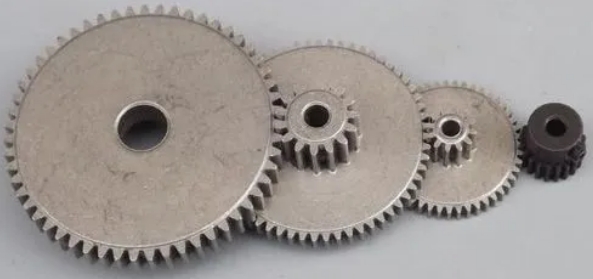Comparison: Gear for Speed Measurement vs Transmission Gear
Time:2024-01-03 13:17:34 Source:未知 Click:次
In mechanical equipment, gears are a common transmission device that can transfer power from one component to another. According to their functions and structures, gears can be divided into various types, among which the most common are gears for speed measurement and transmission gears. This article will compare the advantages and disadvantages of these two types of gears, helping everyone to comprehensively understand their strengths and limitations.
First, let's look at the gear for speed measurement. The gear for speed measurement is a device used to measure the running speed of equipment, usually installed on the output shaft of the equipment. When the equipment runs, the gear for speed measurement rotates with the operation of the equipment. By measuring the number of rotations of the gear for speed measurement, the speed of the equipment can be obtained.
The advantages of the gear for speed measurement are mainly reflected in the following aspects: first, its structure is simple and easy to install and maintain; second, its accuracy is high and it can accurately measure the speed of the equipment; finally, its price is relatively low, suitable for large-scale use.
However, the gear for speed measurement also has some limitations. First, it can only measure the output speed of the equipment, not the input speed; second, it may produce a large amount of heat when running at high speeds, requiring good heat dissipation design; finally, its measurement results are affected by equipment vibration and require vibration suppression treatment.
Next, let's look at the transmission gear. The transmission gear is a device used to transmit power, usually installed between the input shaft and output shaft of the equipment. When the equipment runs, the transmission gear rotates with the operation of the equipment. Through the meshing of the gears, power is transmitted from the input shaft to the output shaft.
The advantages of the transmission gear are mainly reflected in the following aspects: first, its transmission efficiency is high and it can effectively transmit power to all parts of the equipment; second, its load capacity is strong and it can bear large loads; finally, its design is flexible and different numbers of teeth and modules can be selected according to the needs of the equipment.
However, the transmission gear also has some limitations. First, its structure is complex and difficult to install and maintain; second, its price is high and not suitable for large-scale use; finally, noise and vibration will be generated during its operation and noise and vibration control is required.
In general, the gear for speed measurement and transmission gear have their own advantages and disadvantages. The gear for speed measurement has a simple structure, high accuracy, and low price, suitable for measuring the speed of equipment; while the transmission gear has high transmission efficiency, strong load capacity, and flexible design, suitable for transmitting power. When choosing which type of gear to use, it is necessary to consider the specific needs and working environment of the equipment comprehensively.


